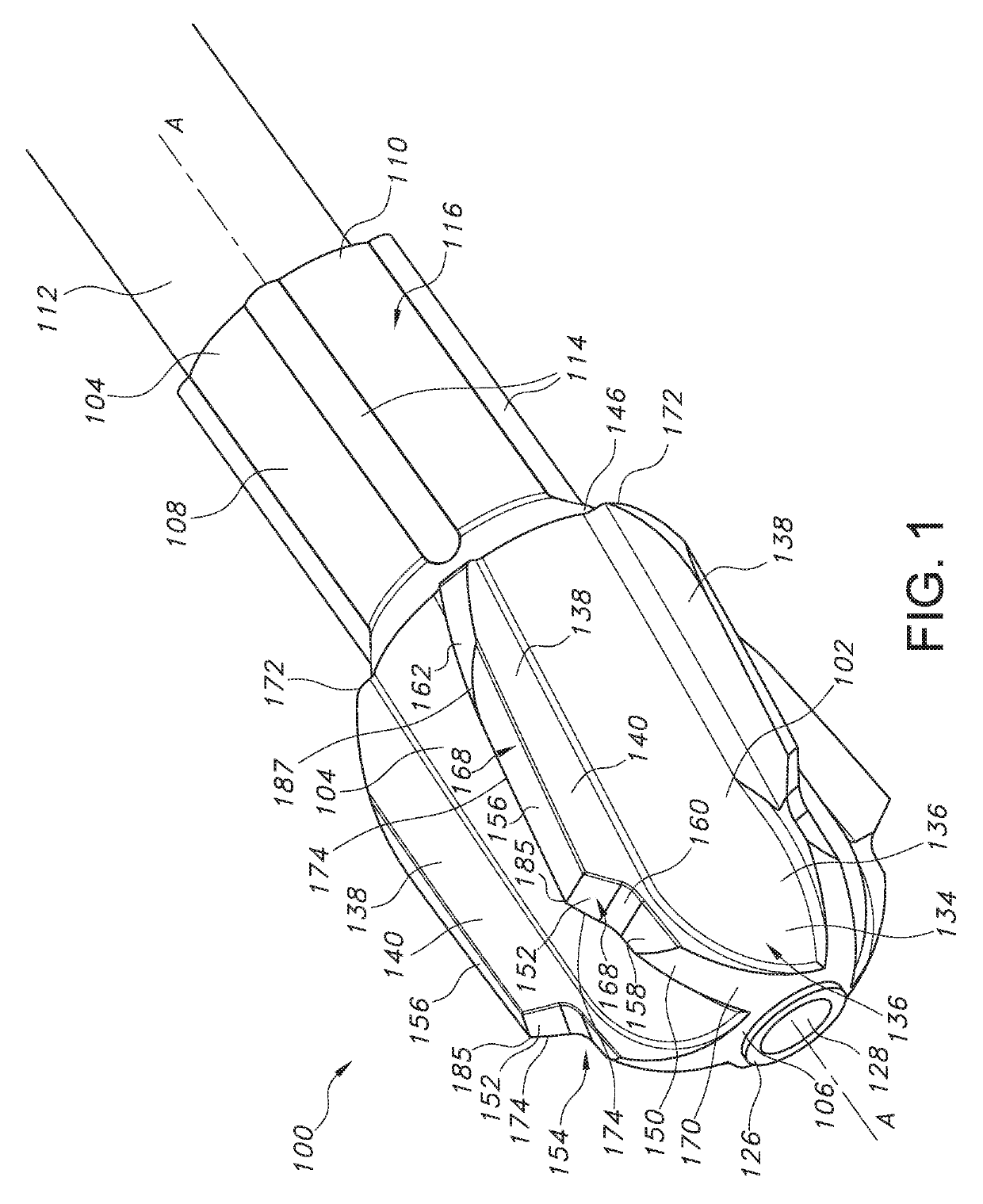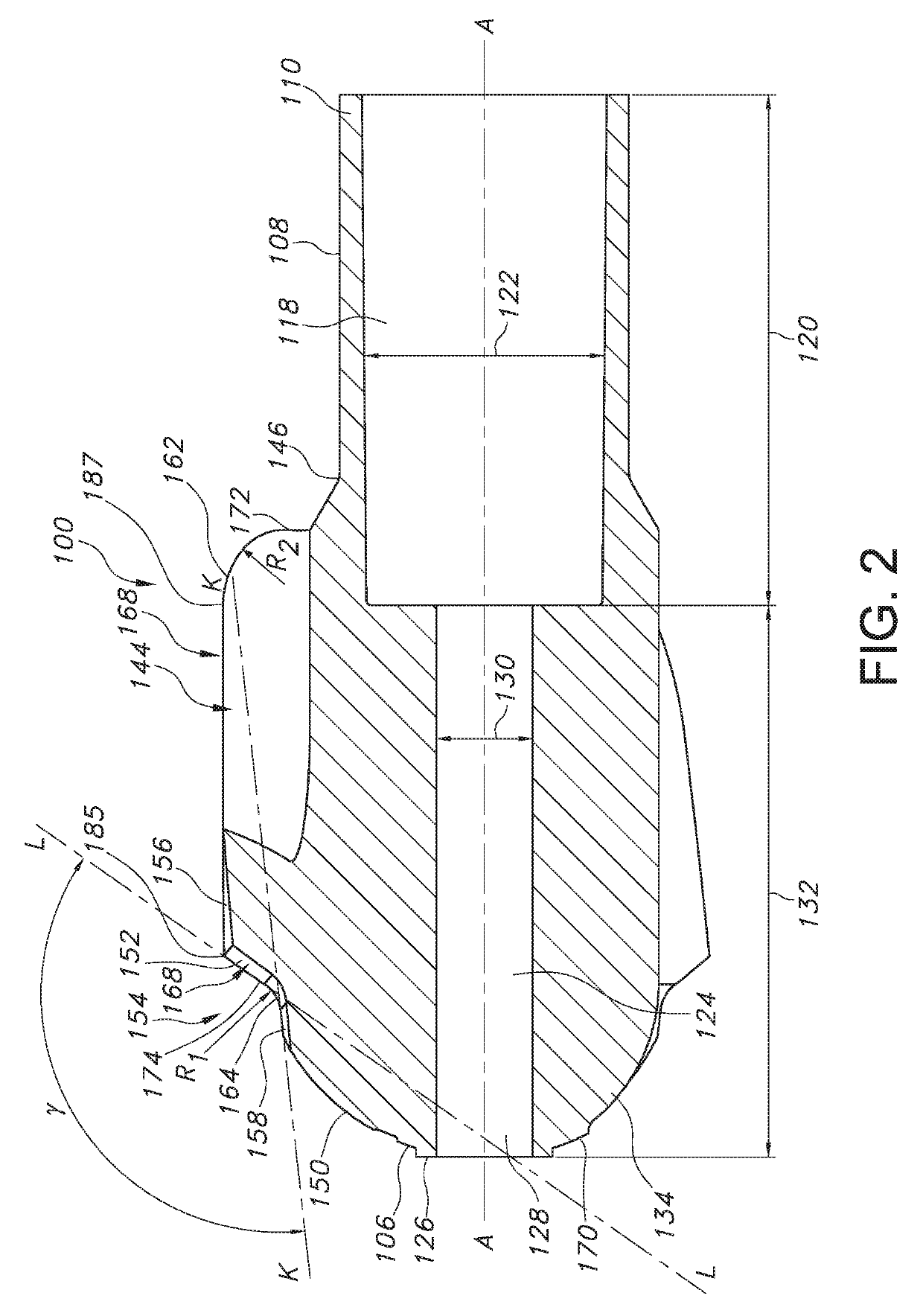Cutting head for an intramedullary reamer
a cutting head and intramedullary technology, applied in the field of cutting heads, can solve the problems of inefficient blade design, unsatisfactory patient outcomes, dull cutting blades, etc., and achieve the effects of reducing manufacturing time, reducing potential disengagement of shafts, and reducing the cost of grinding operations
- Summary
- Abstract
- Description
- Claims
- Application Information
AI Technical Summary
Benefits of technology
Problems solved by technology
Method used
Image
Examples
Embodiment Construction
[0028]Now turning to the figures, FIGS. 1-5, 8 and 9 illustrate an embodiment of a cutting head 100 that is configured to cut and remove bone and tissue from the intramedullary canal. As shown in FIG. 1, the cutting head 100 comprises a cylindrically shaped body 102 that extends along longitudinal axis A-A from a distal bone cutting portion 104 having a distal end 106 to a proximal barrel portion 108 having a proximal end 110. The bone cutting portion 104 provides for cutting and removal of bone and tissue from the intramedullary canal during a surgical procedure. The barrel portion 108 provides for a detachable connection of the cutting head 100 to a drive shaft 112 (FIG. 1). For example, a drive shaft 26 connected to a rotary motor (not shown). In an embodiment, a plurality of spaced apart ribs 114 extend outwardly from an exterior barrel surface 116. As shown in FIGS. 1 and 4, the ribs 114 extend axially and are spaced from, but parallel to the longitudinal axis A-A. The pluralit...
PUM
 Login to View More
Login to View More Abstract
Description
Claims
Application Information
 Login to View More
Login to View More - R&D
- Intellectual Property
- Life Sciences
- Materials
- Tech Scout
- Unparalleled Data Quality
- Higher Quality Content
- 60% Fewer Hallucinations
Browse by: Latest US Patents, China's latest patents, Technical Efficacy Thesaurus, Application Domain, Technology Topic, Popular Technical Reports.
© 2025 PatSnap. All rights reserved.Legal|Privacy policy|Modern Slavery Act Transparency Statement|Sitemap|About US| Contact US: help@patsnap.com



